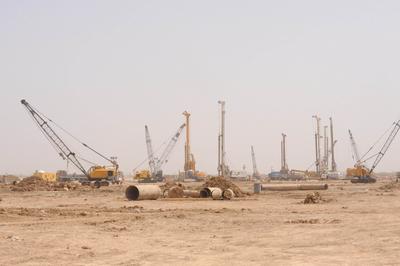In fact, the lack of economic integration in South Asia is endemic. It is not just a challenge for India and Pakistan, but for many other countries in South Asia as well. So it is interesting that Indian foreign-policy makers seem to be re-emphasising the economic dimensions of their country’s strategy. For example, India’s national security advisor, Shivshankar Menon, recently urged India and its neighbours to refocus on economic integration. Ironically, Menon argued, economic success has raised the costs of not doing business.
The importance of fostering economic ties can be seen across the region: India continues to grow rapidly, even amid a post-crisis slowdown; Bangladesh has become attractive to global market participants; and Pakistan is a profitable frontier market despite gathering investment risks. The opportunities and challenges are on display in Sri Lanka as well; its economy has grown rapidly as new economic opportunities have opened with the end of the civil war in 2009. But to sustain growth, Sri Lanka needs to shift from public sector to private sector-driven growth — and that will require new investment in key sectors such as tourism, agriculture, fisheries, business process outsourcing, and infrastructure. And although China has picked up some of the slack, India is a more proximate economic partner.
Cronyism, protectionist tendencies, and political risks remain considerable obstacles across the region, including in Colombo. But growth continues across South Asia. And various studies have demonstrated the potential gains from trade. One recent report from an Indian consumer research group, with support from the Asia Foundation, argues that further integration of trade among South Asian economies could yield as much as $2 billion to consumers.
In light of these developments, it is encouraging that Menon and others in India seem to be giving regional trade integration new emphasis, especially because India’s size and rapid growth could help it lead the way. There are three areas of India’s prospective new emphasis on economic integration that bear watching in coming years.
First, how will India choose to play the strategic consequences of its economic growth? One of India’s leading economic journalists, Sanjaya Baru, has long argued that India should work not just for India–Pakistan bilateral cooperation or regional collaboration within the South Asian Association for Regional Cooperation, but also on a parallel track. One vehicle for achieving regional economic cooperation at a faster pace, he argues, may be an expanded ‘Bay of Bengal Community’. This includes building on the existing efforts of the Bay of Bengal Initiative for Multi-Sectoral Technical and Economic Cooperation, which involves technical cooperation among Bangladesh, Bhutan, India, Nepal, Sri Lanka and two Southeast Asian countries — Myanmar and Thailand. And if Myanmar’s process of political opening proves to be real and is matched by an economic opening, then India will be well positioned to help forge new patterns of integration between South and Southeast Asia.
Second, will India increasingly meld economics into its strategic thinking? The ability to do so will become especially important if Indian foreign policy continues to so ambitiously ‘look east’ in Asia. After all, India risks being left behind because of the significant mismatch between its lofty strategic goals and more earthbound economic realities.
Trade, for example, plays a growing role in the Indian economy, and New Delhi has signed preferential trade agreements with ASEAN and Singapore. Yet scale remains a handicap: 11.6 per cent of ASEAN’s trade was with China in 2009, compared to 2.5 per cent with India. Meanwhile, the backbone of East Asian economies remains the integrated supply and production chains to which India is still largely irrelevant. More manufacturing in India’s southern states could mean greater integration into East Asian supply and productions chains, and outbound investment could help transform India’s interactions with Southeast Asia. But, here too, scale remains a handicap.
Domestic Indian policy choices will be particularly important in helping to elevate India’s presence in regional trade. The national manufacturing policy could yield new manufacturing zones with industrial parks, warehousing and opportunities in special economic zones. And as the Indian government works to increase the share of manufacturing from around 16 to around 25 percent of GDP in a decade, India could not only compete at the bottom of the value chain, but also aim to compete in machinery, auto parts and automobiles, particularly through the adoption of new policies at the state level.
Third, how successfully will India manage the various new initiatives in South Asia? Pakistan’s decision to grant most favoured nation status to India, for example, could prove especially significant. While obstacles remain, Pakistan is continuing to take important and constructive steps, such as shifting from a ‘positive’ to a ‘negative’ list-based import regime. India’s commerce and industry minister, Anand Sharma, noted that this step will increase the number of items that India can trade with Pakistan from 17 per cent to about 90 per cent, so it is vital this deal is handled with care.
The bottom line is this: India’s debate about economics and strategy is intensifying, and that is a decidedly good thing. After all, the country’s success will increasingly depend on how New Delhi and India’s states respond to opportunities generated beyond the country’s borders.
Evan A. Feigenbaum is Adjunct Senior Fellow for East, Central and South Asia at the Council on Foreign Relations.
A version of this article was first published here on the Council on Foreign Relations Asia Unbound blog.

